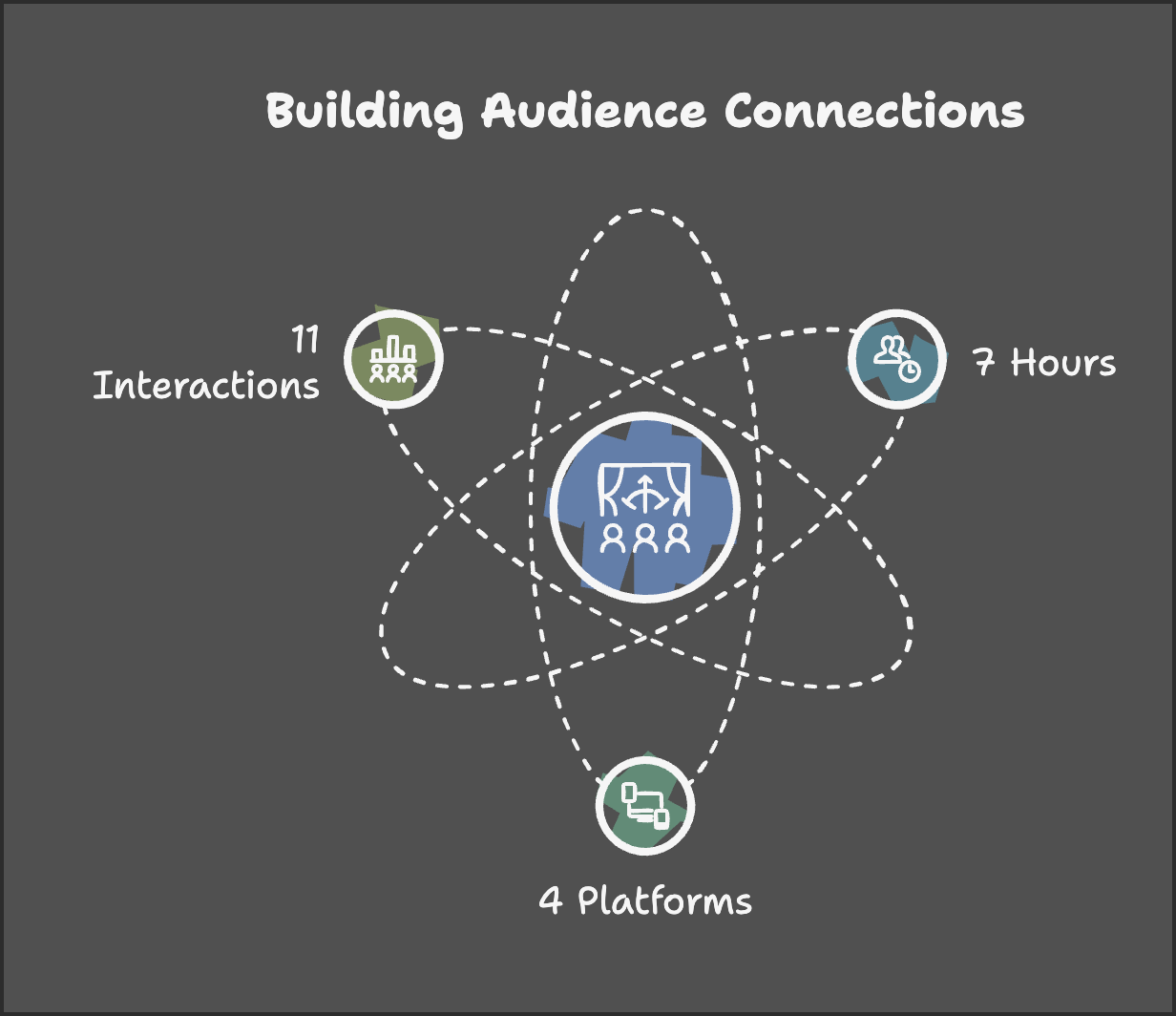In today’s digital age, building a strong personal brand is essential for standing out in a crowded marketplace. But with so much competition, how do you ensure your brand gets noticed, remembered, and trusted? The answer lies in the 7-4-11 rule, the most important rule of personal branding. This proven framework helps you build recognition, familiarity, and influence by strategically creating repeated exposure across multiple platforms. In this blog, we’ll break down the 7-4-11 rule, why it works, and how you can use it to elevate your personal brand.
What Is the 7-4-11 Rule?

The 7-4-11 rule is a powerful framework designed to help you build recognition and familiarity with your audience. It’s based on the idea that people need repeated exposure to you and your content across different contexts to truly remember and connect with you. Here’s what the numbers mean:
- 7 Hours: The total amount of time someone needs to spend consuming your content to feel like they know you.
- 4 Platforms: The variety of places where someone encounters your content.
- 11 Interactions: The number of times someone needs to engage with you or your content.
When combined, these elements create a strategy for building parasocial relationships—one-sided connections where your audience feels like they know you because of repeated exposure to your content.
Why Is the 7-4-11 Rule the Most Important Rule of Personal Branding?
The 7-4-11 rule is not just about visibility; it’s about creating a deep sense of familiarity and trust. Here’s why it’s the most important rule of personal branding:
1. Builds Recognition: By showing up consistently across multiple platforms, you increase the chances of being remembered.
2. Creates Trust: The more time someone spends with your content, the more they feel connected to your ideas and personality.
3. Scales Your Influence: This framework allows you to reach a wider audience while maintaining a personal connection.
Let’s dive deeper into each component of the 7-4-11 rule.
7 Hours: The Time Investment
The first part of the 7-4-11 rule is the 7 hours of cumulative content consumption. This doesn’t mean a single 7-hour interaction but rather the total time someone spends engaging with your content across various formats.
For example, they might:
- Watch your YouTube videos.
- Listen to your podcast episodes.
- Read your blog posts or books.
- Attend your webinars or live events.
The goal is to create enough exposure for your audience to feel like they know you. By the time they’ve invested 7 hours in your content, they’ll be familiar with your style, your ideas, and your personality, which builds trust and connection.
4 Platforms: The Power of Ubiquity
The second part of the rule is the 4 platforms where your audience encounters your content. The key here is variety. You want to be present in different spaces where your target audience spends their time.
Examples of platforms include:
- Social Media: LinkedIn, Instagram, Twitter, or TikTok.
- Video Platforms: YouTube or Vimeo.
- Audio Platforms: Podcasts on Spotify or Apple Podcasts.
- Written Content: Blogs, newsletters, or books.
- Community Spaces: Forums, Facebook groups, or live events.
By diversifying your presence, you increase the likelihood of being discovered and remembered. Someone might stumble across your LinkedIn post, then listen to your podcast, and later read your blog—each interaction reinforcing their connection to you.
11 Interactions: The Engagement Factor
The final part of the rule is the 11 interactions. These are the touchpoints where someone actively engages with you or your content. Each interaction builds upon the last, creating a sense of familiarity and connection.
Examples of interactions include:
- Watching a video.
- Listening to a podcast episode.
- Reading a blog post.
- Commenting on your social media post.
- Attending a webinar or event.
- Responding to a survey or poll.
The more someone interacts with your content, the more likely they are to feel connected to you and remember you.
How to Implement the 7-4-11 Rule in Your Personal Branding Strategy
Now that you understand the framework, here’s how to put it into action:
1. Create Consistent Content: Focus on producing high-quality content that aligns with your brand and resonates with your audience.
2. Diversify Your Platforms: Be present on at least 4 platforms where your target audience spends their time.
3. Encourage Engagement: Invite your audience to interact with your content through comments, shares, and participation in events.
4. Track Progress: Use analytics to measure how much time people are spending with your content and which platforms are most effective.
Why the 7-4-11 Rule Works for Personal Branding
The 7-4-11 rule works because it taps into the psychology of familiarity and trust. When someone sees you repeatedly across different platforms, invests time in your content, and engages with you, they start to feel like they know you. This is the foundation of a strong personal brand.
By following this framework, you’re not just building visibility—you’re building relationships at scale. Whether you’re an entrepreneur, a thought leader, or a creative professional, the 7-4-11 rule is the most important rule of personal branding because it ensures you’re memorable, relatable, and influential.
Final Thoughts
In a world where attention is scarce, the 7-4-11 rule provides a clear roadmap for standing out and building a personal brand that resonates. By focusing on 7 hours of content consumption, 4 diverse platforms, and 11 meaningful interactions, you can create a lasting impression and establish yourself as a key person of influence in your field.
So, start today. Be consistent, be present, and be engaging. Your audience is waiting to connect with you.
What do you think about the 7-4-11 rule? Have you tried implementing it in your personal branding strategy?
